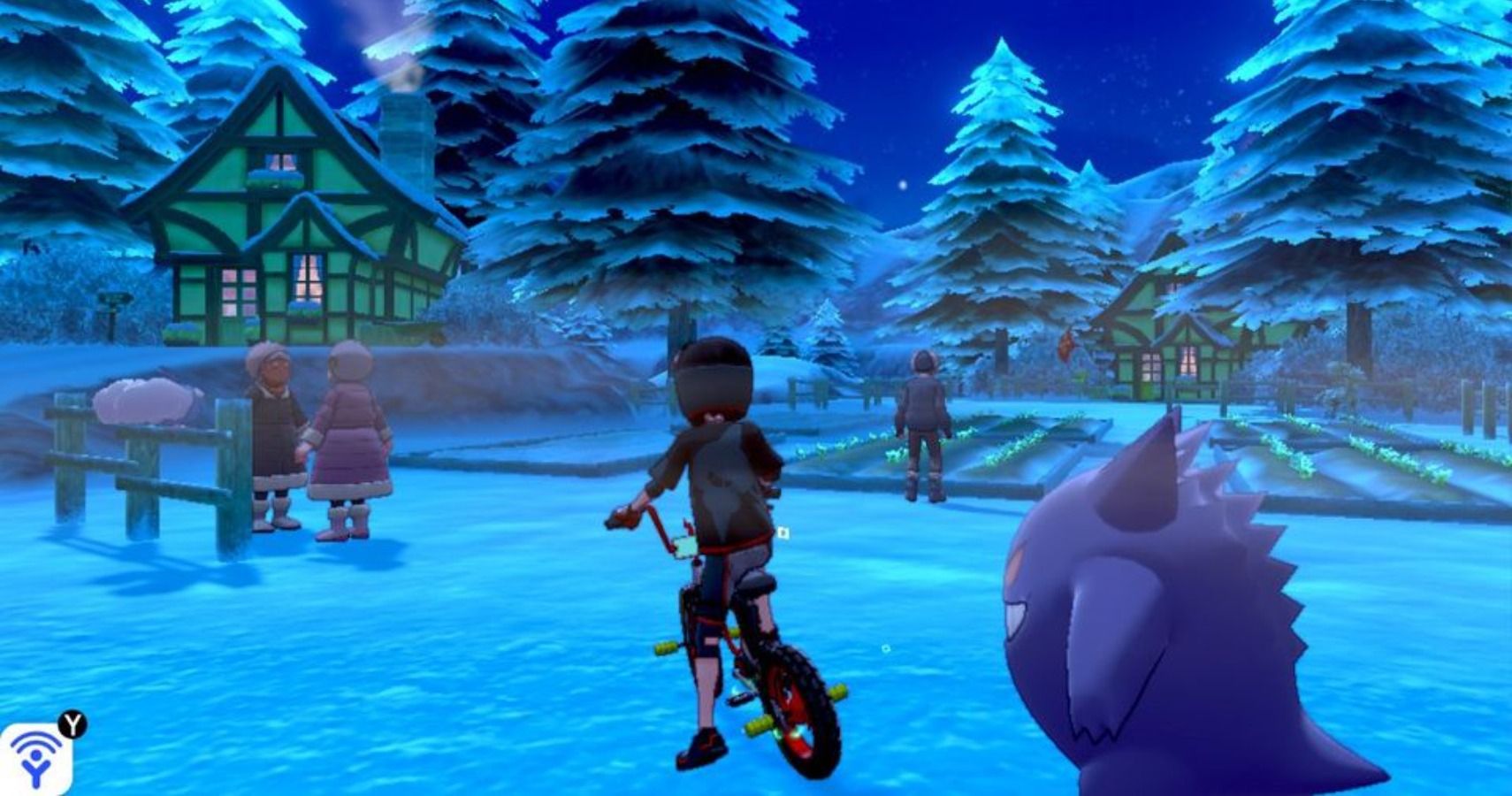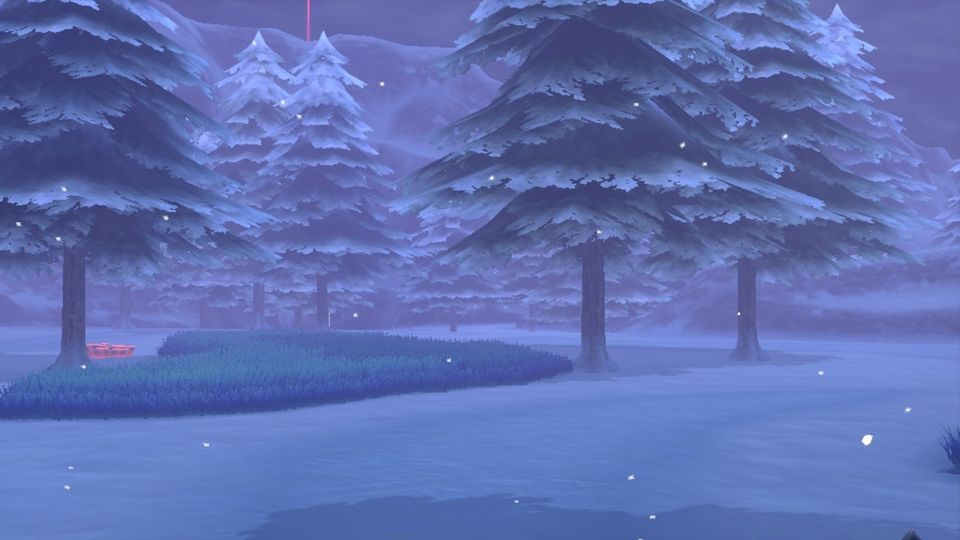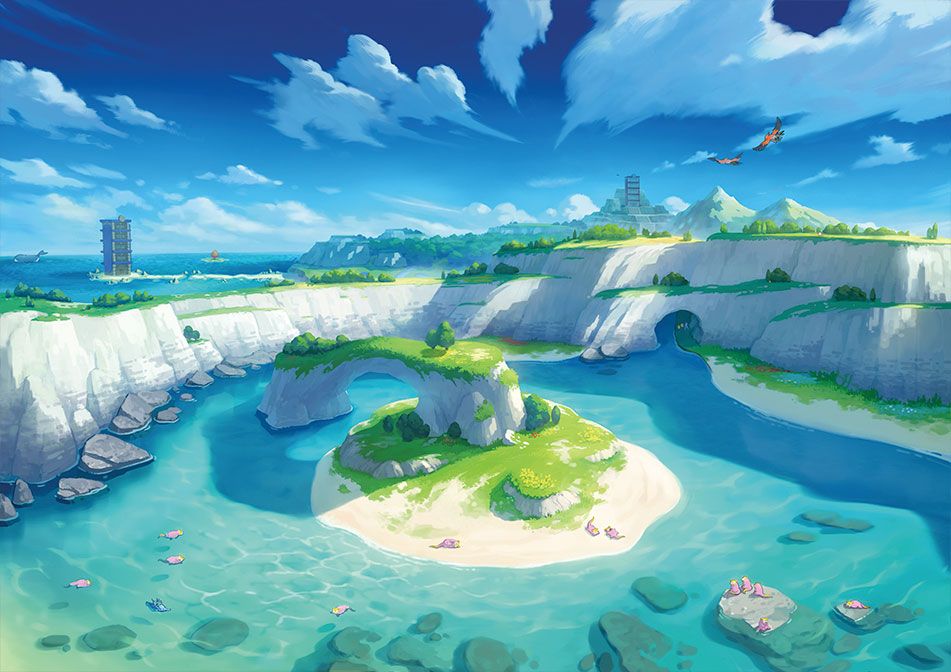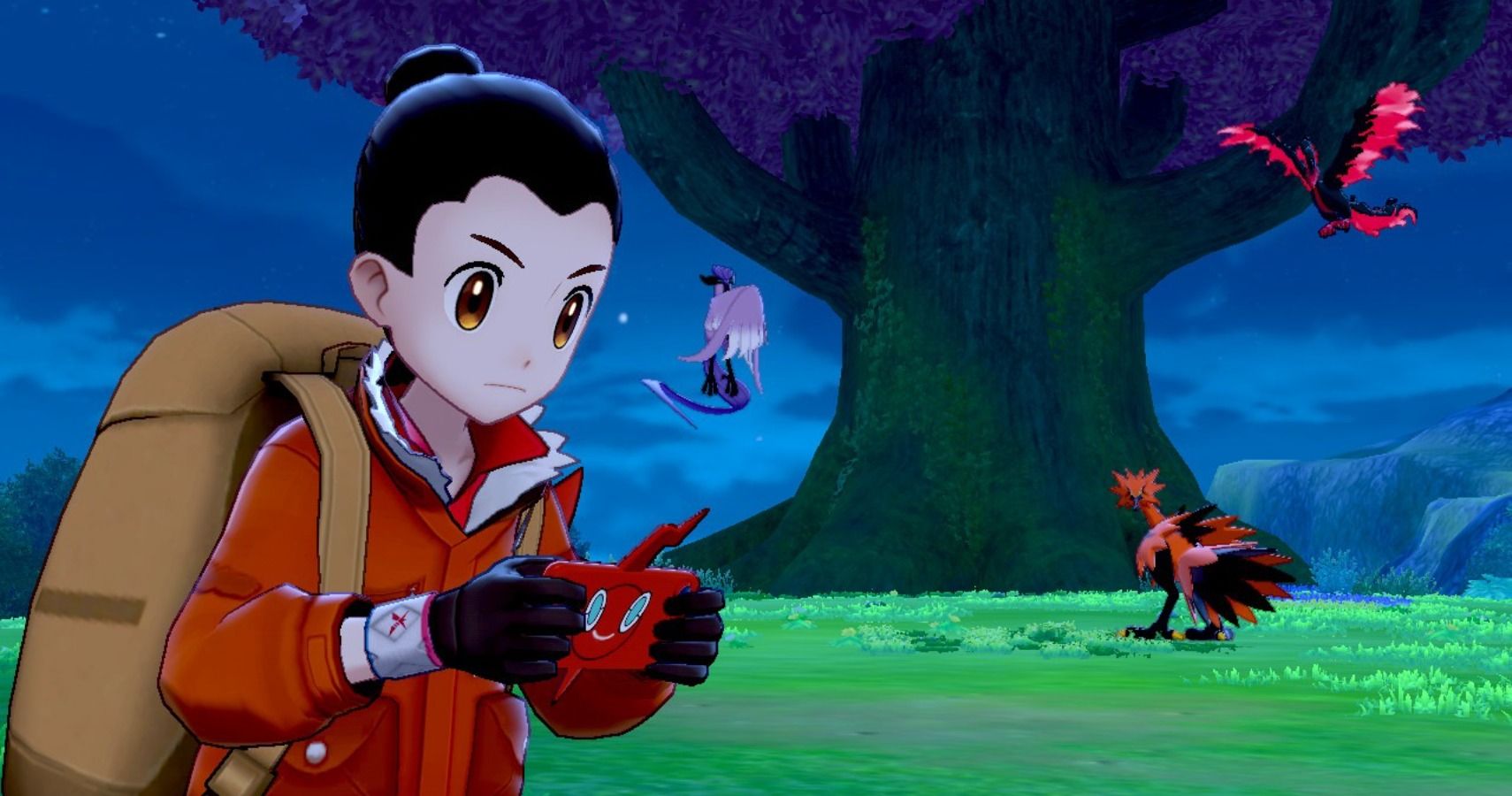I’ve been playing Crown Tundra pretty much non-stop since it launched and have yet to grow even remotely bored of its excellent spin on the Sword & Shield base game that precedes it. Its Max Lair raids serve as vastly superior post-game content to the humdrum Wyndon City Battle Tower, while the sheer immensity of its luscious snowscapes act as a Pokemon playground without bounds.
Most of all, though, Crown Tundra is engrossing because it is the first successfully experimental paragon of open-world Pokemon I’ve ever seen. It offers us a glimpse at what that ever-elusive structure could potentially look like, and fortunately, it’s remarkably enticing.
Last year, Pokemon Sword & Shield became the first ever mainline Pokemon game to be playable on a home console. Let’s Go Eevee & Pikachu were the trailblazers for this, sent out to test the waters — as Pokemon spin-offs so often are — and determine what kind of systems could and couldn’t be effectively translated to the games industry big screen. Opinions on Let’s Go have been polarizing, to say the least. I personally love it, and recently waxed lyrical about how much I want Let’s Go Johto. But we’re not here to talk about Let’s Go. We’re here to talk about how if Let’s Go was the guinea pig (or Morpeko) for Sword & Shield, then Sword and Shield were the Morpekos for Crown Tundra.
Isle of Armor admittedly didn’t grip me in the same way Crown Tundra has, but it’s important to consider it as part of this phenomenon, too. Specifically, I want to talk about Sharpedo. It’s one thing to have overworld sprites in a Pokemon game, which can make areas feel more dense and tangible. It’s another thing entirely to allow you to circle the sea surrounding an island while being pursued by Pokemon’s take on a great white shark crossed with a military torpedo. Open-world games aren’t just a first or third-person camera that you can manipulate while exploring a variety of regions that seamlessly blend into one cohesive whole. They need to make sense — an open-world Pokemon game where Wailord’s blowhole isn’t visible from the shore isn’t a very good open-world Pokemon game whatsoever. You need Mightyena to lunge at you from across the road. You need Machamp to be punching rocks in their rocky faces. You need Haunter to stick its tongue out and then disappear behind a derelict building, before reappearing around the corner and laughing its arse off at you in the most disrespectful way possible.
This is because Pokemon have distinct personalities and physical attributes. Isle of Armor’s Sharpedo design is undeniably excellent in this regard. I didn’t like Isle of Armor all that much because I think Urshifu is a bit shite — I also reckon Calyrex is boring, for what it’s worth. But I’ll tell you one thing for free: Sharpedo’s presence in Isle of Armor is the most thematically impressive design I have ever seen in relation to the potential for an open-world Pokemon game down the line. I have never wanted one as much as I did the first time I saw that stupidly endearing shark beeline its way towards me. I actually stopped moving and let it bump into me, because I knew it was going to be Sharpedo. I let the idiot shark crash into my bike on purpose.
This was exciting for me at the time, but the relative non-significance of Isle of Armor nullified its effect on me. By the time I evolved Kubfu, I was ready to put my Switch away for a bit. I still haven’t done all of the shit Hop wants me to do because Hop annoys me. But I dusted off Sword & Shield for Crown Tundra, and that same magical feeling I got the first time I saw a wild Sharpedo came back — except this time it was a hundred times more potent than before.
Crown Tundra is based around a small village called Freezington. It might seem like a stretch at first, but consider this: the closest things to this in the Wild Area and Isle of Armor are the Day Care and Dojo, respectively. This is the first time we’ve seen a bonafide open-world area in Pokemon with a hub that is actually a lived-in town. Freezington has residents, and houses, and a history — and yet there are no loading screens separating it from Frostpoint Field. You can actually see Pokemon spawning from the middle of the village — you can hear them shouting at each other, with Amaura’s ethereal cry ringing in the background as an old lady who’s spent her whole life here tells you that the King of Bountiful Harvests fairy tale is a big load of steaming shite. And then you can grab your bike and cycle off up to the Max Lair, the route to which is part of the same overarching map.
This extends to every single aspect of Crown Tundra’s design. You can go off through a cemetery and either swing a left up to a snow-laden slope, or continue straight across seemingly boundless grassland. Eventually you’ll get to a river — oh look! There’s a hole in the cliff-face that leads to some caves, which in turn branch out into a complex network of caverns. Can you find your way out the other side to the illustrious Dyna Tree? Or are you going to head up the winding paths to the Crown Shrine? All of these emphatically distinct biomes are boiled down into a simmering melting pot that brews them into one massively versatile world — and yet this is only part of the world, because Crown Tundra is only part of Sword & Shield. It’s the most interesting part, mind. But it’s still just one part — and it makes sense that it’s the last one.
Nintendo bridged a huge gap with Sword & Shield, bringing the long-beloved mainline Pokemon series to home consoles for the first time in history. The next reasonable development after this would be to convert the series’ traditional formula of fixed camera angles, separate maps for each area, and region-gating into a full-fledged open world. There are some obstacles here: how do you line up mandatory trainer battles without choke points that are specifically endemic to Pokemon’s status as a non-open-world game? How does level-gating work — if you’ve read my other piece on the new Pokemon DLC, you’ll know that Crown Tundra has accidentally broken Sword & Shield primarily because you can go there before beating the game, or earning a single Gym badge.
These are issues, sure — but they’re not unsolvable. You’d still need to battle other trainers to grind levels and defeat Gyms, so whether or not the game forces you into these battles or gently implies that you won’t be strong enough to progress until you actively seek them out is relatively unimportant. Level-gating follows similar logic — certain Pokemon rom hacks already use level-scaling systems so you can challenge Gyms in whatever order you want, as opposed to having to progress through them in a linear order.
Crown Tundra is great for a variety of reasons, but most of all, it proves that open-world Pokemon is not just a possibility — it’s a possibility that could genuinely revolutionize the series. We’re a long way out from Gen 9 — if I was a gambling man, my guess would be 2022. But given that Nintendo has gone out with a bang for Sword & Shield, I don’t think it’s unreasonable to assume that we could see a whole lot of Crown Tundra in whatever comes next.




